September 23, 2020
R365 Accounting
AP Invoice: Quick allocation to multiple locations
Allocate invoice amounts to multiple locations quicker with the new dropdown menu that allows you to select multiple locations instead of adding locations one by one. For example, if you have an AP invoice for a utility bill that needs to be spread across 5 locations, you can quickly do so by selecting the 5 locations in the new dropdown menu. The amount entered will be automatically distributed evenly across the 5 locations. You can then make edits to the amounts for each location manually if necessary.
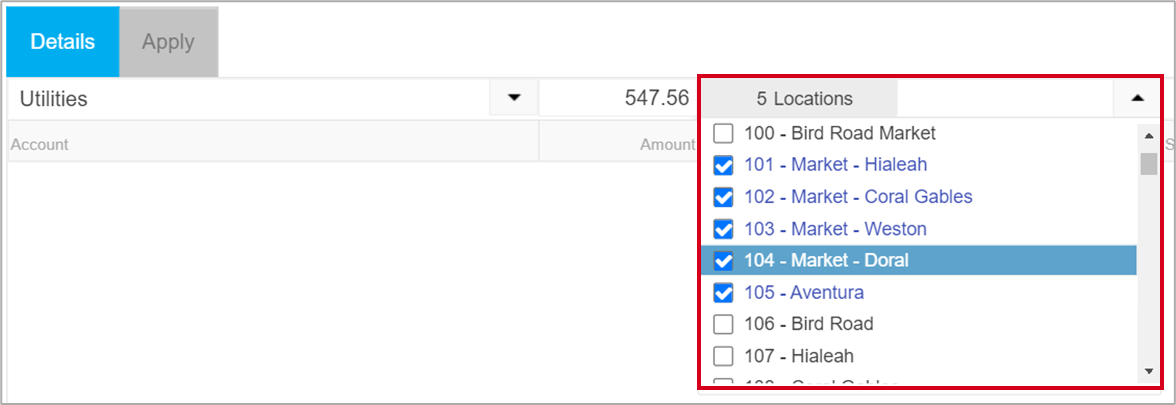
AP Invoice: Total of quantity column
Quickly confirm the accuracy of invoices with the new total at the bottom of the quantity column. You no longer need to do math in your head to confirm that the total matches your invoice.
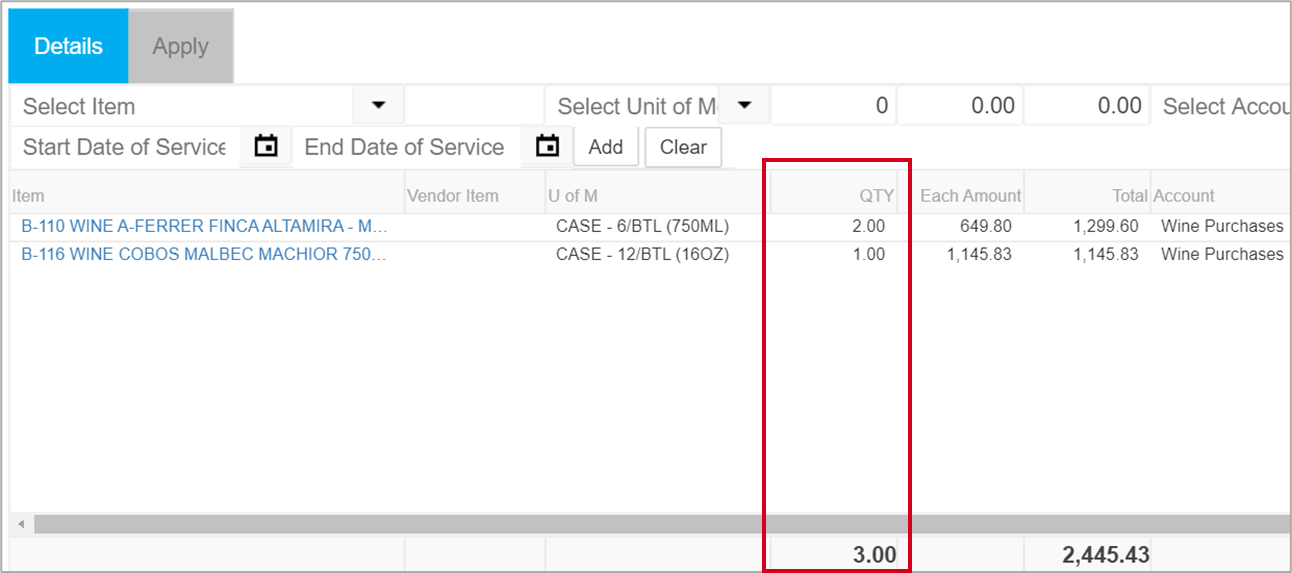
Transaction Summary: Account # and Location # columns
Spend less time verifying the accuracy of a transaction with the new account and location number columns in the transaction summary of a Journal Entry.
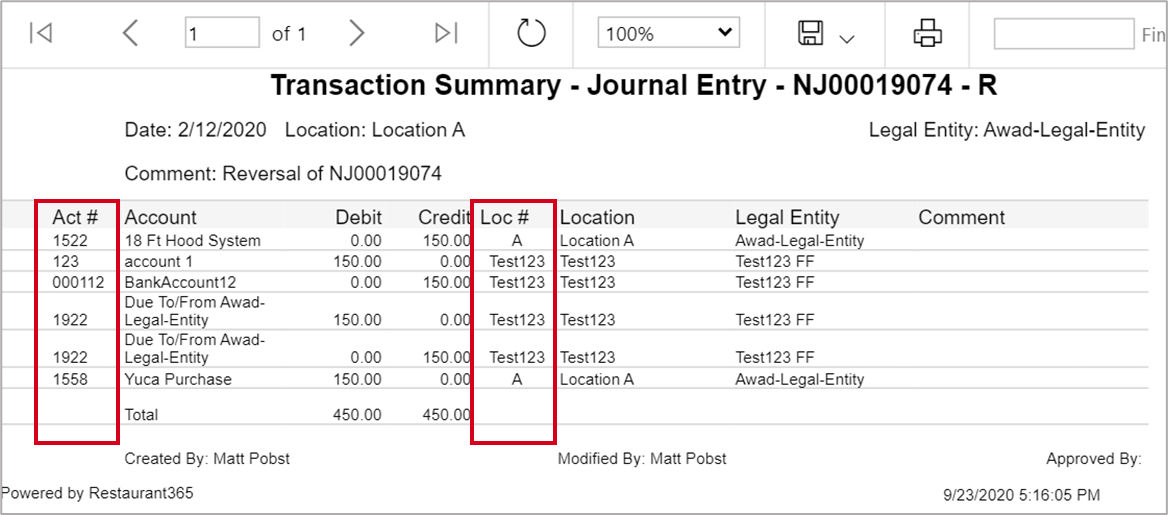
September 8, 2020
AR Aging Report: Sum by location
Control cashflow easier by seeing your accounts receivable by location. The AR Aging report now has a “sum by location” option that groups your receivables by location. For example, you can run the AR Aging report with the “sum by location” toggle set to “yes” and send location managers a list of customers they can call to request payments.
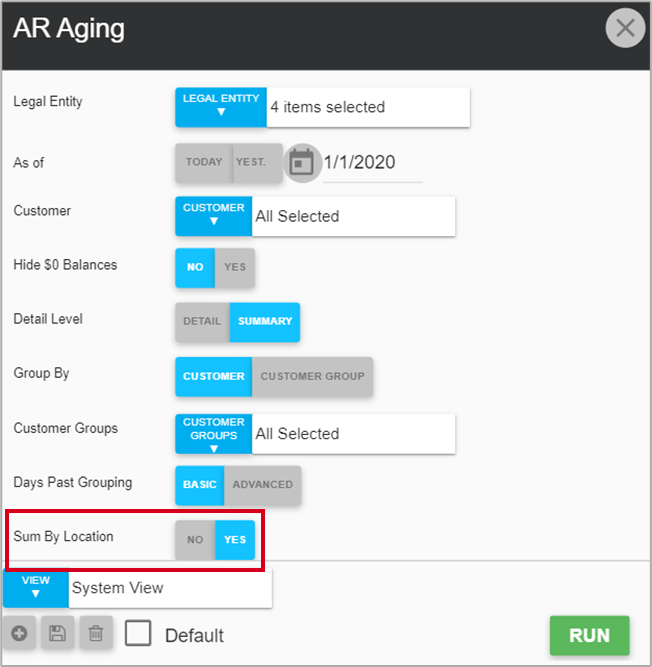
AP Entry: Missing items
Flag missing items easier with a new “missing item” option that can be selected right from the item dropdown menu in the AP Invoice entry screen. The new “missing item” option can be found at the bottom of items list or by starting to type “missing item” in the “select item” dropdown menu.
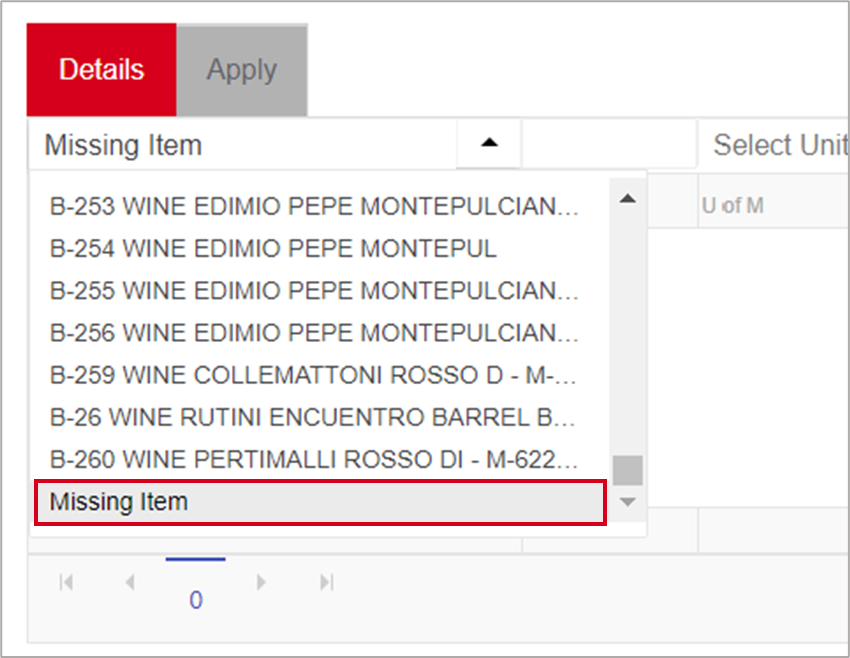
Update existing job records via import
Save time by updating job records in bulk with the import tool. Some of the fields that can now be updated by downloading, filling out, and uploading the provided CSV template include:
Job title
Job code
GL Account
Pay rate
August 26, 2020
Documents to Process: Merge documents
Save time by merging separate documents into one document right from the documents to process list view. For example, if you’re an AP clerk, and took multiple pictures of one invoice on your mobile device, you can send those separate pictures directly to the Docs to Process queue. Once in the list view, you can select the separate documents, and merge them into one, manageable file.
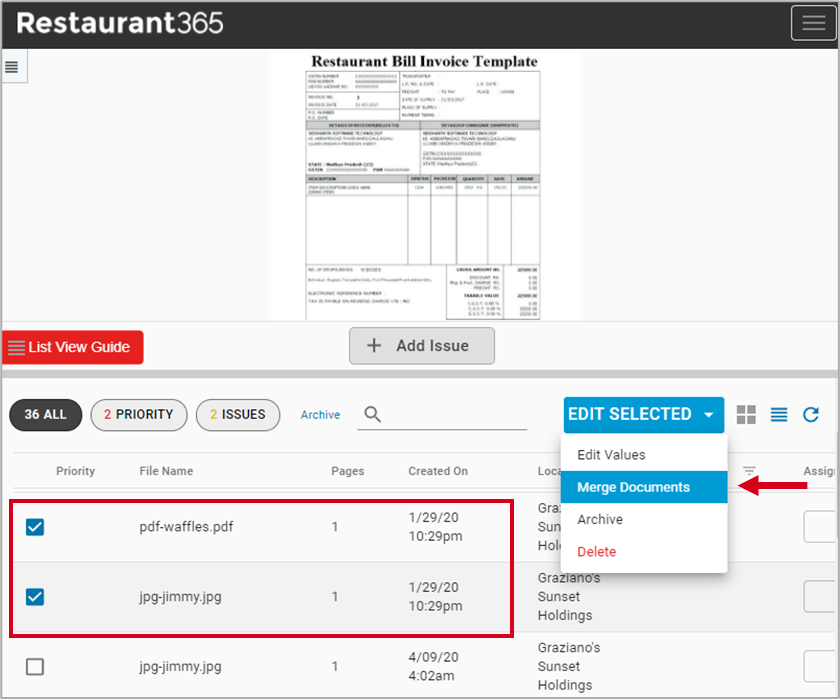
Links to invoices from AP Invoice Distribution report
Spend less time finding and correcting coding errors by accessing specific invoices directly from the AP Invoice Distribution report. Each row within the “Invoice #” column is now hyperlinked so you can navigate directly to the invoice and make any necessary changes without having to navigate to the “Transaction Details” grid.
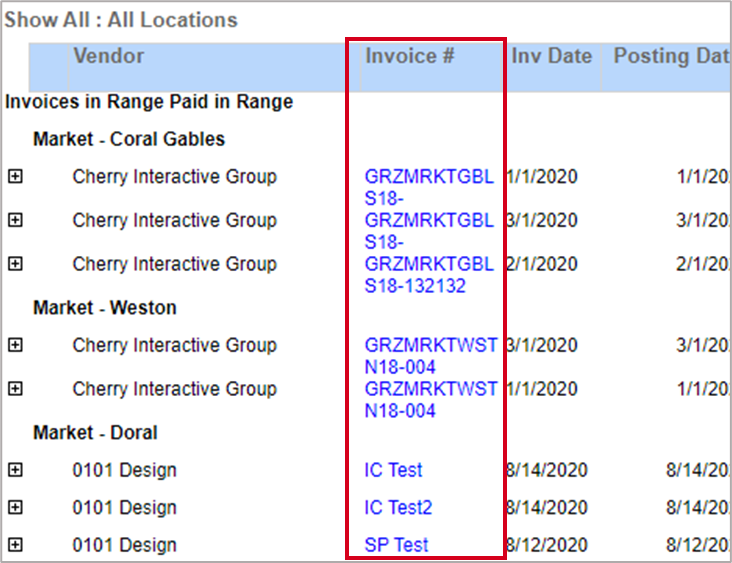
Fintech refund processing options
If you have a Fintech integration, you can now choose how R365 handles refunds for each vendor. You can choose to create a credit memo or insert a line item called “Fintech Refund.”

August 17, 2020
Custom Financial Reports: “Number of Full Periods” row
You can now include a “number of full periods” variable in your custom financial reports which will return the number of full periods represented by the column. You can use this variable to get forecasting calculations such as estimated annual profit. For example, you can divide total net profit by the number of full periods to get profit per month. Then multiply that number by 12 to get estimated annual profit.
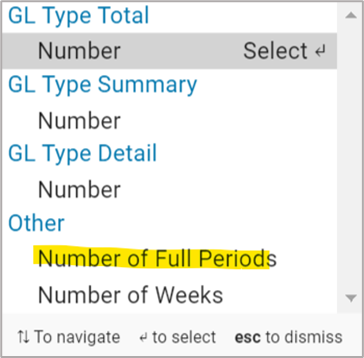
Custom Financial Reports: Open reports from the package runner
You can now open individual reports directly from the package runner without having to navigate to the package editor. Each report within your package will have an icon next to the report name. Clicking the icon will open the report in a new tab.
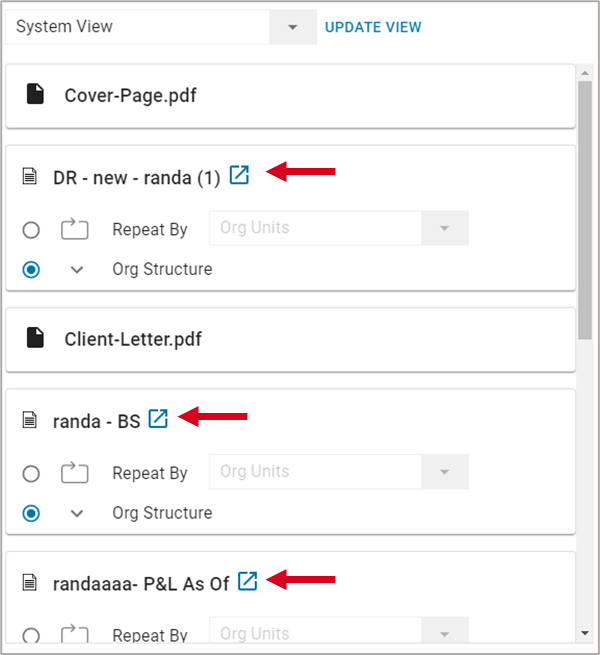
“App Access” column
It is now easier to see which employees have access to the R365 mobile app and which do not. The new “App Access” column in the “Employee” grid clearly indicates each employee’s access without having to go into each Employee Record. For example, if you are a store manager, you can do a quick audit of employees who need access to the mobile app by simply filtering the “App Access” column to show only “No” values. You can then grant access to each employee who needs it.
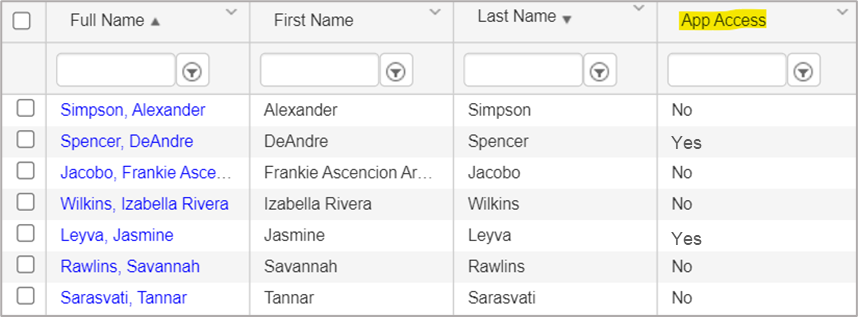
Employee Link Column
It is now easier to differentiate users of the R365 system and users that were created from an employee record. In the “Users” grid under “Administration,” there is now an “Employee Link” column that displays “Yes” if a user was created from an employee record and “No” otherwise. For example, if you are an R365 admin and want to see a clean list of users that have access to Restaurant365, you can filter the “Employee Link” column to only show “No” values. This makes your list less cluttered and easier to work with.
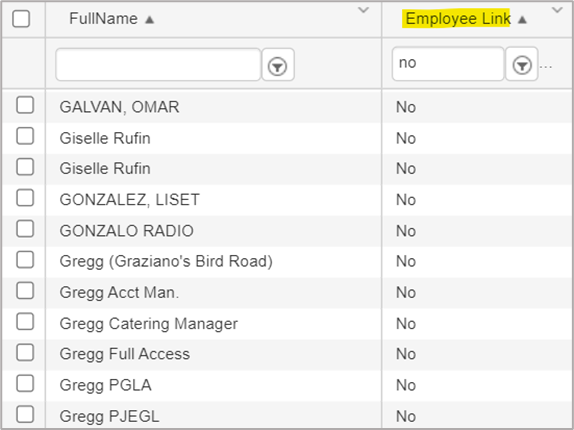
August 5, 2020
Multi-location employee shift availability
Schedule multi-location employees faster by seeing the shifts in which they have already been scheduled at your other locations. In the example below, Alejandro is already scheduled on Wednesday at the Sunset location. If Alejandro also works at your Bird Road Market location, you can now see that information when you are creating the schedule for the Bird Road Market location. The tile will appear in gray, letting you know the employee is already scheduled for that day as well as the location and the hours.
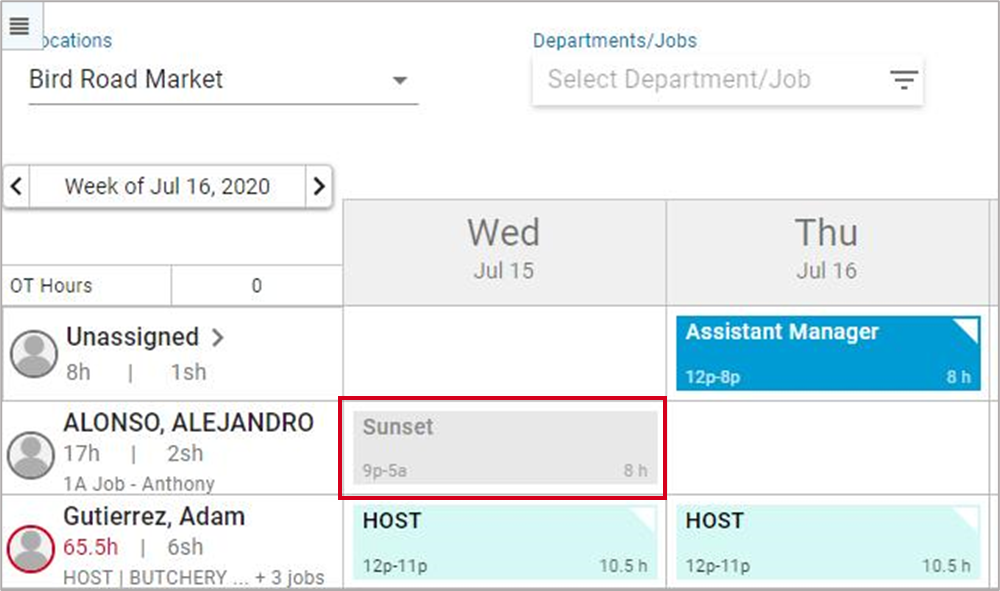
Multi-location announcements
Send multi-location announcements to the scheduling app faster with this new enhancement that allows you select multiple locations for each announcement instead of sending announcements one by one. For example, if you need to inform all 10 of your locations of a company-wide holiday, you can click on the “SELECT ALL” button to send the message to all of your locations. If you need to send an announcement to 3 of your locations that are located in a state that requires temporary health inspections, you can select the appropriate locations when sending announcements.
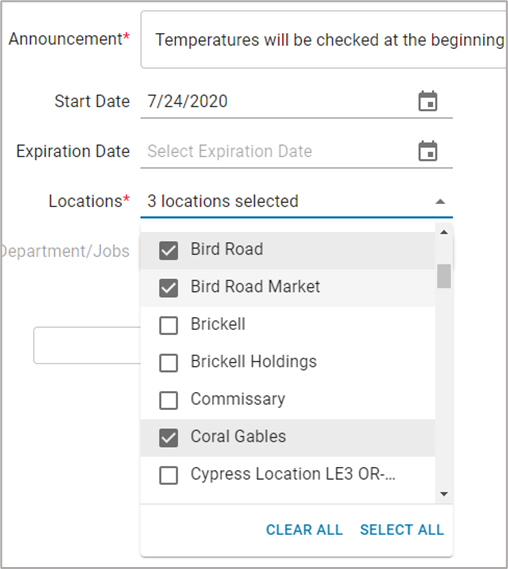
Multi-location blackout dates
Set scheduling black-out dates for multiple locations faster. You can now indicate all multiple locations when setting a blackout date instead of setting the blackout date for each location individually. For example, if you need to set a blackout date for all 10 of your locations, you can click on the “SELECT ALL” button to blackout a particular date for all of your locations. If you need to blackout a date for 3 of your locations due to a local event, you can select the appropriate locations to black out.

Individual day sales forecasts hyperlinks
It is now easier to see that you can drill into individual dates within the forecasting module. The dates are now colored blue so it’s easier to recognize that it is a clickable link. Clicking the link will take you to the daily forecasting screen for that date where you can see and adjust the factors that affected that day’s forecast.
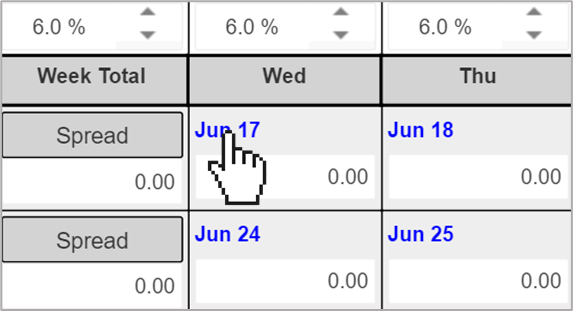
Send alerts for published shifts
You can now send alerts to scheduled employees for shifts that have already been published without having to unpublish and republish the schedule.
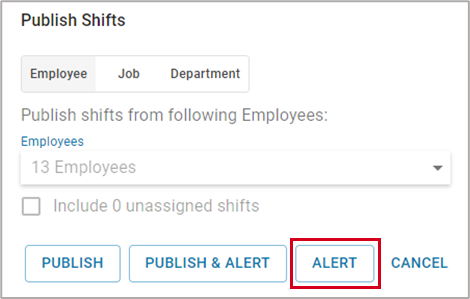
July 13, 2020
Custom Financial Reports: Dynamic Variables on Package Documents
Save time by using dynamic variables to automatically populate data into Word documents within Report Packages. For example, you can now use the “@OrgUnit” variable in your cover pages instead of manually typing each location for each Report Package. Other variables include, @DateToday(text), @DateToday(date), @ReportDate(text), @ReportDate(date), @ClientName, @ClientCity, @ClientState, and more. This functionality is currently available for Word documents only. Click here to learn more about using Dynamic Variables in Report Packages.

Custom Financial Reports: Default Package Views
Run the Report Packages you need faster by saving the Report Package views you create and setting them as your default view. For example, if you are a District Operator, you can save a Report Package view with the Org Units in your district and set the view as your default so you can get the Package you need faster.

New franchisee roles
As a franchisor accounting leader, you now have more control over franchisee user accounts with two new primary user roles. The Limited Accounting Manager user role is similar to the Accounting Manager user role in that they can enter transactions. However, they cannot enter master records. The Limited Accounting Clerk user role is similar to the Limited Accounting Manager user role except for the ability to approve any transactions.
Import location attributes
With the previous release, you are allowed to add additional attributes, such as restaurant type, seating capacity, and delivery services for each location. In future releases, you will be able to see how your restaurant locations perform in relation to others in your segment. In this release, you can now use the import tool to import location attributes for multiple locations without having to enter the information for each location individually.
New theoretical on-hand inventory report
This new report helps you easily identify significant differences between theoretical and actual on-hand inventory. This report will take your last count, purchases, transfers, waste, and sales into consideration to give you a theoretical on-hand count. You can run this report before your next inventory count and quickly identify any large discrepancies between theoretical and actual counts.

Fixes:
My Reports: New portrait-oriented reports: Standard reports in the “My Reports” section print in the landscape orientation even when the portrait orientation is selected. You can now choose a portrait version of the most widely used standard reports. You can find the following reports in the "My Reports" section:
GL Account Detail with legal entity - Portrait
Profit and Loss - Custom Date - Portrait
Profit and Loss - Portrait
Profit and Loss Details - Portrait
Profitability Report - Portrait
Transaction Detail Export - Portrait